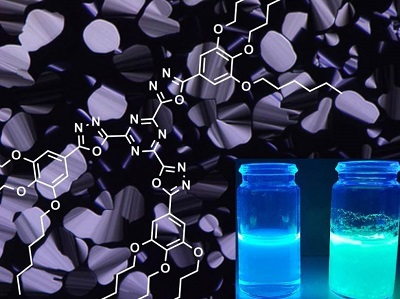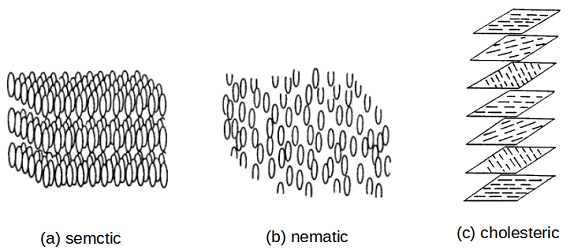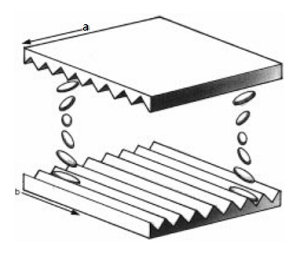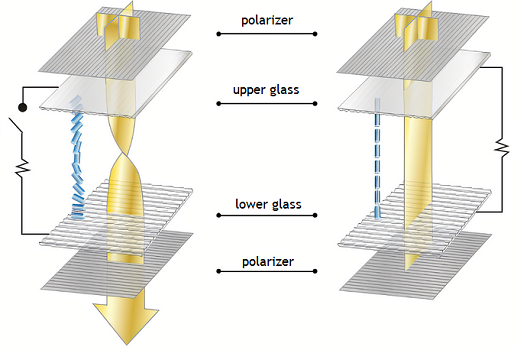What is LCD
Daily, we interact with Liquid Crystal Display multiple times, from calculator display, cell phone screen to TV and computer monitor. What is LCD display after all? If you share the same doubt, please read along.
Liquid Crystal
LCD stands for Liquid Crystal Display. To understand LCD better, you should know more about liquid crystal.
As we know, when a material's temperature is raised, it generally changes state from solid to liquid, then to gas. In 1888, Austrian botanist Friedrich Reinitzer discovered a strange material, cholesteryl benzoate. At 145℃, it melted, becoming cloudy white and viscous. At temperature of 179℃, it became isotropic and clear.

Thermotropic Liquid-Crystal Types
The liquid crystals used in electronic displays are primarily cigar shape liquid crystal. There are three types of cigar-shape thermotropic liquid crystals.
- Semctic Liquid Crystals: The cigar-like crystal molecules are aligned side by side in a series of layers, shown in Fig (a). Molecules’s long axes in a layer are parallel to one another and perpendicular to the plane of layer. Layers can move over each other. And smectic liquid crystals are viscous, but fluid and ordered.
- Nematic Liquid Crystals: “Nematic” comes from a Greek word meaning “thread”. In nematic state, liquid crystal molecules are not in highly ordered state, but they maintain parallel order (see Fig (b)) and align in one direction.
- Cholesteric Liquid Crystals: This type of liquid crystals contain large amount of cholesterol compounds. The molecules in cholesteric liquid crystals are arranged in layers. Within each layer, molecules are aligned in parallel (Fig (c)).

Nematic Liquid Crystal
Liquid crystals used in electronic displays are primarily of nematic type. Its two unique characteristics can be used to produce electronically controlled optical shutters.
- Dielectric Anisotropy – There are two types of nematic liquid crystals. One is called positive dielectric anisotropy and its dielectric constant along the long axis is larger than short axis. Another type is negative dielectric anisotropy, which has opposite behaviour from positive one. So when nematic liquid crystals are sandwiched by two parallel plates and electrical field is applied to the plates, liquid crystal molecules’s alignment can be twisted.
- Birefringence – Liquid crystal redirects the direction of incoming light along its long axis; And it changes the state of polarization and/or changes the direction of polarization.
Liquid crystal can be easily re-oriented, re-aligned or deformed by applying electrical fields, magnetic fields, heat, and/or mechanical stresses. These in turn will affect its optical characteristics based on the birefringence.
Twist Nematic Liquid Crystal Display
In 1970, Wolfgang Helfrich and Martin Schadt discovered a new electro-optical effect, twist nematic. It involved realignment of liquid crystal molecules by dielectric torques. The new effect required the orientation pattern to be twisted in fieldless state.

Liquid crystals are sandwiched between an upper plate and a lower plate, and the plates are grooved in directions “a” and “b”. The molecules along the upper plate align in direction “a” and those along the lower plate in direction “b”. Thus, liquid crystals are forced into a 90º helical twist. Two polarizing filters are placed on the outer surfaces of the two plates. Filters’ polarization directions are aligned in parallel with the groove directions.

When light entering through the top polarizer, it is linearly polarized. Polarized light is then redirected 90º along the helix nematic molecules, and passes through the lower polarizer. When voltage is applied, the nematic molecules straighten out of helix pattern and no longer redirect polarized light. So light can’t pass through the lower polarizer.
This is how LCD with TN panel works. There are other types of commonly used LCD panels. Here is a comparison of TN, IPS and VA LCD.
History of LCD
Liquid Crystal Display (LCD) was invented in 1968 at RCA Laboratories in Princeton, NJ. In 1970, twist-nematic (TN) mode of operation was discovered, which gave LCD the first commercial success. LCD manufacturers supplied small-size displays for portable products such as digital watches and pocket calculators. In 1988, Sharp Corporation demonstrated a 14 inches active-matrix full-color display using a TFT (thin-film-transistor) array. Observing this, Japan launched a true LCD industry. Large-size displays were first supplied to personal computers and then television. In 2020s, China LCD manufacturers supply the most liquid crystal display to market.

Benefits of LCD Display
- Thin and Lightweight, requiring minimal space to integrate into an electronic device.
- Minimal power consumption. An LCD display uses just 10-25% of a CRT monitor power.
- Since it uses very little energy, LCD displays emit practically no heat.
- LCD displays can be made in large sizes of over 100 inch or 250 cm diagonal.
- Long-Lasting, a typical LCD may last for up to 60,000 hours. Depending on how frequently you use it, that translates to 20 or more years of use.
Applications of LCD Display
LCD technology is widely adapted in modern society. From calculator display, mobile phone screen to TV and HMI, you can find LCD in-use for showing images and texts. With the help of coatings, films and twists of structure, LCD can be used in marine applications, out-door environment and harsh weather conditions.
LCD Specialist - Topway
A reliable LCD display manufacturer, designer and supplier, Shenzhen Topway Technology has been serving many industries since 1996, if you have any questions, please leave us a message.
